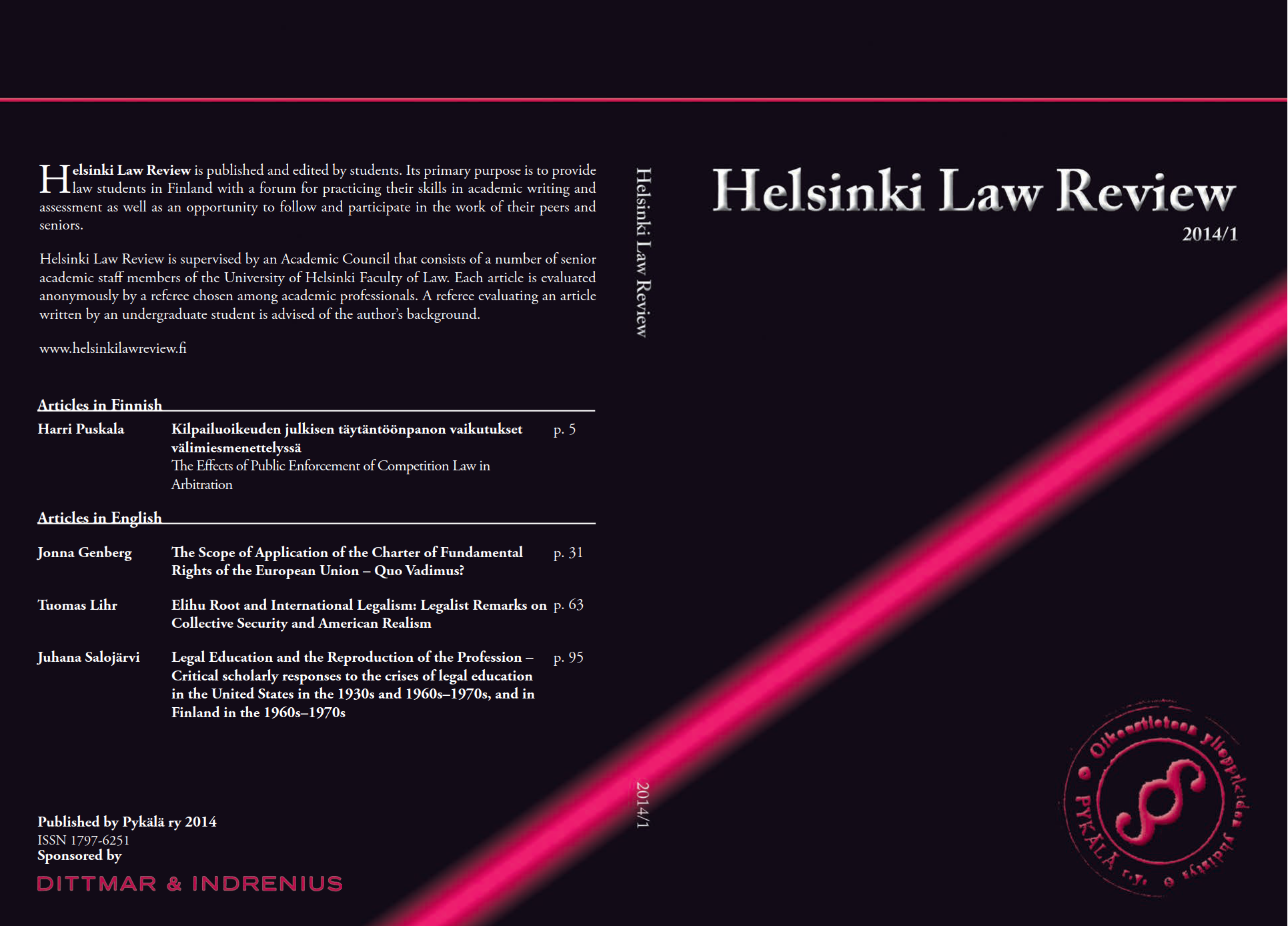The Scope of Application of the Charter of Fundamental Rights of the European Union – Quo Vadimus?
Keywords:
EU Charter of Fundamental Rights, European Union law, Åkerberg Fransson, Melloni, Court of Justice of the European Union, fundamental rights, human rights, direct effectAbstract
The Lisbon Treaty has brought about fundamental changes to the structure of the EU. One of the most important changes is the conversion of the Charter into a legally binding “bill of rights” for the EU. Since the Charter has become legally binding, discussion has arisen concerning the Charter’s scope of application. In 2013, the European Court of Justice gave its ruling in case C-617/10 Åkerberg Fransson, which concerned the clarification of Article 51(1) of the Charter. The standpoint of the CJEU was that the article must be interpreted as meaning that the Charter is addressed to the Member States when they are acting ”within the scope of European Union law”. In dealing with Åkerberg in a coordinated way, the CJEU took a conscious first step towards developing a general theory on how to apply the Charter. Through its recent preliminary rulings, the CJEU has attempted to close the gap by interpreting the notion of “implementing Union law” broadly, thereby clarifying the mixture of different wordings, making it possible to more easily predict the Charter’s scope of application in a particular case. The Charter may be a powerful tool when integrating fundamental rights into new EU legislation. However, whether it can be considered to have been successful in practice leaves some room for doubt.


